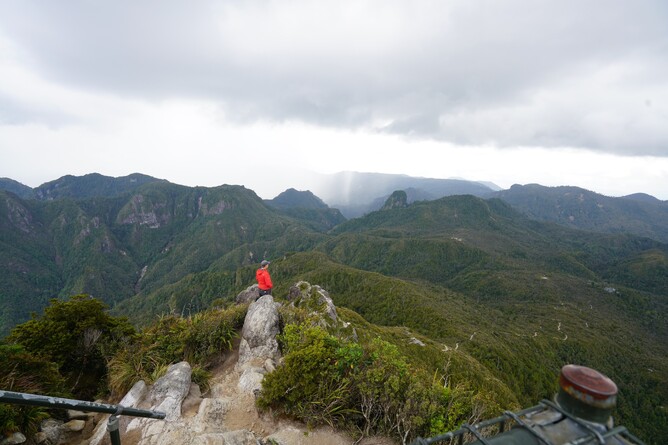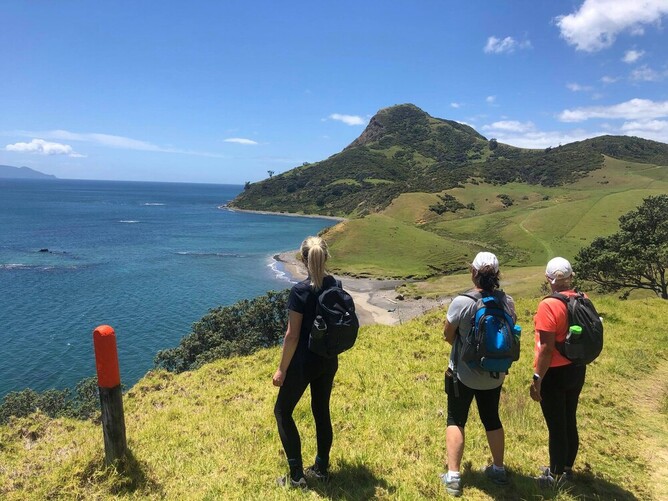Your weather app says "fine and sunny." But those clouds building over the ridge? They're telling a different story, and they're probably right.
New Zealand weather changes fast, but it's not random. The landscape is constantly dropping hints about what's coming next. Learning to spot these signs turns you from someone hoping for good weather into someone who can see it coming from miles away.
Why this matters in New Zealand
Weather changes in minutes, not hours Anyone who's spent time outdoors in New Zealand knows the drill. One minute you're in shorts and a t-shirt, the next you're scrambling for your rain jacket. Our weather can flip completely in 15 minutes.
Your eyes beat your phone Weather apps give you the big picture, but they can't tell you about the microclimate you're standing in. That app might say "light showers" while you're about to get hammered by a downpour.
Mountains make their own weather Hills and ranges don't just sit there — they actively create weather. Understanding this gives you a huge advantage in predicting what's coming your way.
Reading the wind
Check the treetops: Trees show you what the wind is doing before you feel it. If the tops are swaying while you're in calm air, stronger winds are heading your way.
Listen to the forest: Different trees make different sounds in the wind. Native bush has a distinctive rustle that sounds different from pine forests. Learn these sounds and you'll know what's happening even when you can't see the trees.
Morning calm can be deceiving Many places are calm at dawn regardless of what's forecast. Don't let this fool you, check what's happening above ground level.
Your 5-minute weather check
Before heading out, spend five minutes looking around:
What clouds can you see and which way are they moving?
Is there any wind? Check ground level and treetops
How does the air feel - clear and crisp or heavy and still?
This quick check often tells you more about the next few hours than any weather app.
Dawn diagnosis The first hour after sunrise gives you the best preview of your day:
Clear dawn = good morning ahead
Misty dawn = usually clears to nice weather
Overcast dawn = probably cloudy all day
Windy dawn = unsettled conditions likely to continue
Local weather quirks
Coromandel Peninsula tips
Sea breezes usually kick in around 11 AM on clear days
Clouds often build over the hills while beaches stay sunny
East coast weather is different from west coast weather
Waikato region patterns
Morning fog usually clears by 10 AM
Afternoon winds typically blow up the valley from the coast
The ranges create "rain shadows" that keep some areas dry
Practice makes perfect
Every time you're outdoors, take a moment to notice the natural weather signs around you.
Keep mental notes: Notice which signs proved accurate and which didn't. Over time, you'll develop an intuitive feel for your local weather patterns.
Share with others: Weather awareness is a safety skill. Share what you observe with fellow hikers and learn from their experiences too.
Why this makes hiking better
Learning to read natural weather signs doesn't just make you safer, it makes you feel more connected to the landscape. Instead of being surprised by weather changes, you start to see them coming and can plan accordingly.
You'll find yourself naturally checking cloud movements, feeling wind changes, and noticing bird behaviour. Before you know it, you'll be that person who somehow always knows when to put on a jacket before everyone else realises it's getting cold.
The sky is constantly telling you what's coming next. Once you learn to listen, every hike becomes more interesting, safer, and more enjoyable.
Of course, if you join us on one of our fully guided Nature & Nosh trips, we take care of the weather forecasting and planning - so you can just walk and enjoy!


